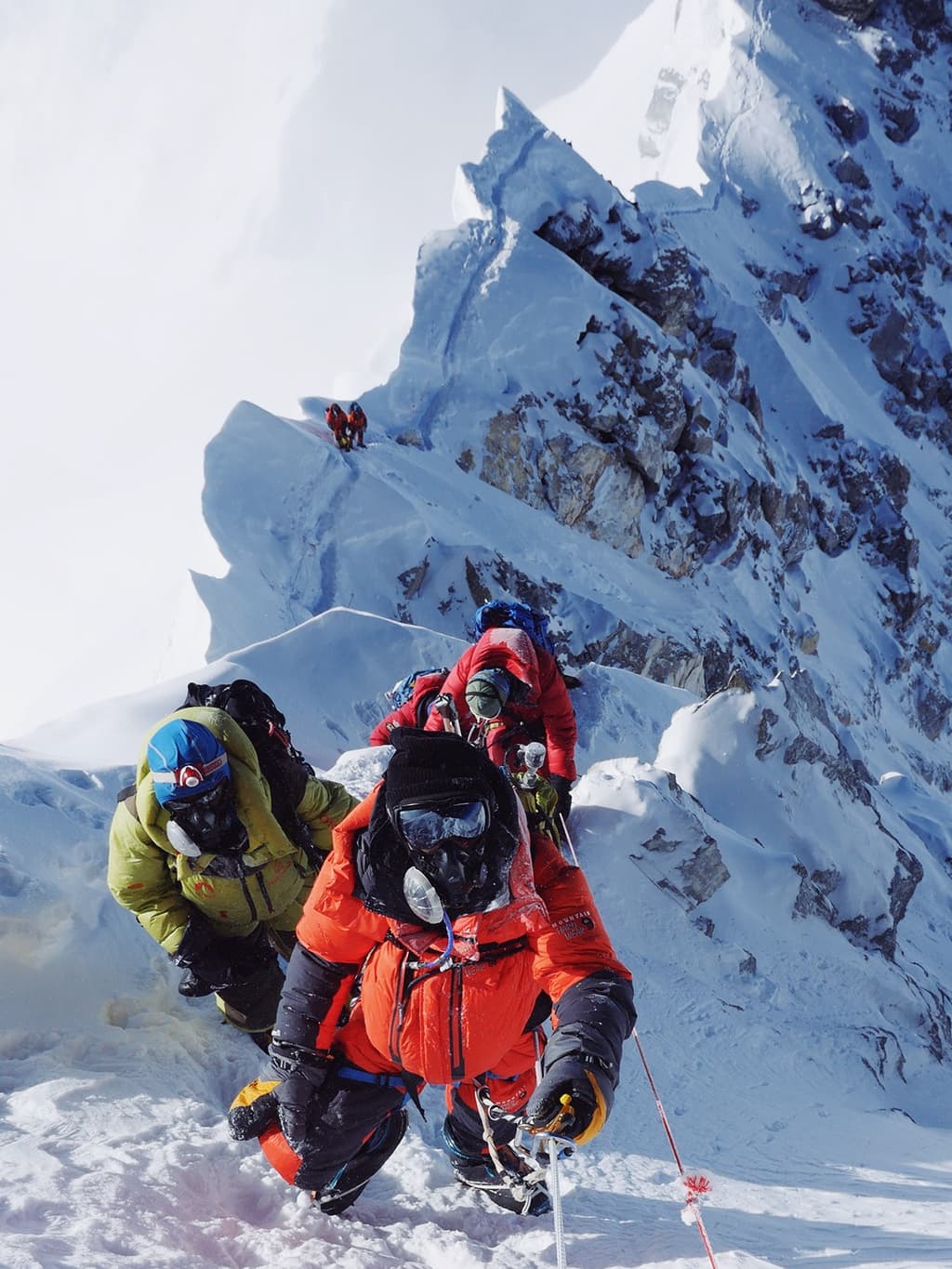Planning to tackle Island Peak (Imja Tse) in Nepal? Proper acclimatization is the key difference between summit success and potentially dangerous altitude sickness. Developed by Everest Sherpa Expeditions Pvt. Ltd., this guide will help trekkers and climbers understand how to safely adapt to high altitudes in the Himalayas.
For climbers of all experience levels, we'll cover essential acclimatization strategies, altitude sickness prevention, and the proven techniques used by professional Sherpa guides. You'll learn about the gradual ascent approach that maximizes your body's adaptation and the warning signs that shouldn't be ignored at high elevations.
Understanding High Altitude Physiology
As you climb higher, the air pressure decreases, making it harder for your body to get enough oxygen. Your respiratory rate increases, and your body begins producing more red blood cells to compensate. This natural adaptation process takes time—rushing it often leads to altitude sickness.
Most Island Peak expeditions start with the trek to Everest Base Camp, allowing gradual acclimatization before attempting the 6,189m (20,305ft) summit. This multi-day approach gives your body crucial time to adjust to decreasing oxygen levels.
Essential Acclimatization Techniques
The most effective approach combines these proven strategies:
- Climb high, sleep low: Hike to higher elevations during the day but return to lower altitudes for sleeping
- Gradual ascent: Limit daily elevation gain to 300-500 meters once above 3,000m
- Rest days: Include full acclimatization days every 1,000m of elevation gain
- Hydration: Drink 4-5 liters of water daily to combat the dehydrating effects of altitude
- Proper nutrition: Maintain calorie intake despite potential appetite loss
Our Sherpa guides carefully plan each expedition's itinerary to incorporate these principles, dramatically improving summit success rates and safety.
Understanding High Altitude Physiology and Risks
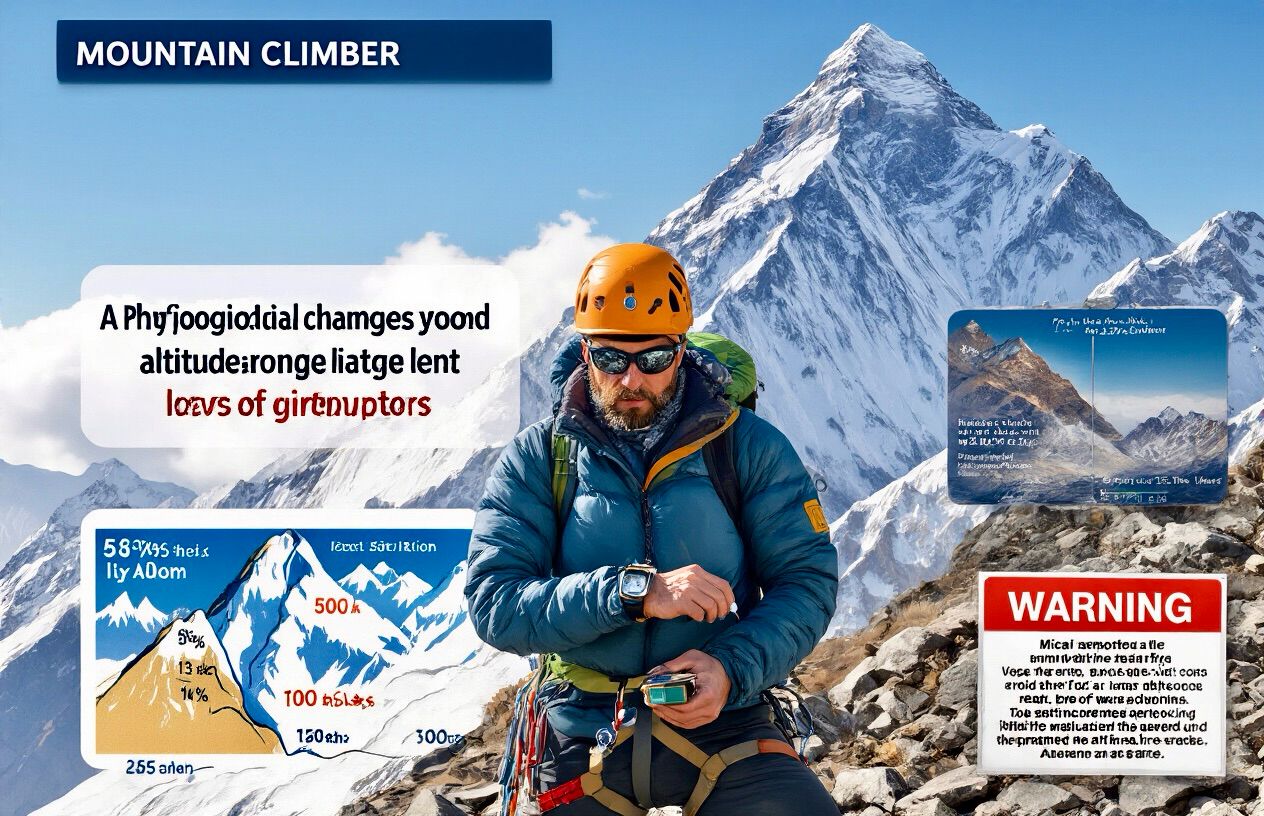
Effects of decreased oxygen levels on body systems
At high altitudes, particularly those encountered during an Island Peak climb (20,305 ft/6,189m), the partial pressure of oxygen decreases significantly. This reduction forces your body to adapt through various physiological responses. Your respiratory rate increases as your body attempts to compensate for lower oxygen availability. Simultaneously, your heart works harder, increasing cardiac output to deliver the limited oxygen to vital organs and muscles.
Within days of exposure, your body begins producing more red blood cells to improve oxygen-carrying capacity. This natural adaptation, while beneficial long term, can initially increase blood viscosity, potentially elevating risks of clotting or increasing cardiac workload.
Common altitude-related illnesses and symptoms
High altitude environments can trigger several specific conditions that climbers must vigilantly monitor:
- Acute Mountain Sickness (AMS): The most common altitude illness, characterized by headache, nausea, fatigue, dizziness, and sleep disturbances. Consider this an early warning system from your body.
- High Altitude Pulmonary Edema (HAPE): A potentially life-threatening condition where fluid accumulates in the lungs. Watch for persistent dry cough, shortness of breath even at rest, frothy sputum, and extreme fatigue.
- High Altitude Cerebral Edema (HACE): The most severe altitude illness involving brain swelling. Symptoms include severe headache, confusion, ataxia (loss of coordination), hallucinations, and potentially coma.
Individual risk factors and susceptibility variations
Susceptibility to altitude illness varies significantly between individuals and isn't necessarily related to physical fitness. Key factors affecting your personal risk include:
- Previous history of altitude illness (strongest predictor)
- Rate of ascent (faster ascents increase risk)
- Sleep elevation (especially above 9,800 ft/3,000m)
- Individual genetic predisposition
- Pre-existing medical conditions, particularly cardiac or respiratory issues
- Age (though connections remain unclear)
- Poor hydration status
- Use of alcohol or sedatives that can mask symptoms or depress respiration
Critical altitude thresholds for acclimatization
Understanding altitude thresholds helps establish effective acclimatization strategies:
- 8,000 ft (2,400m): Minimal risk zone where most travelers experience few issues
- 8,000-10,000 ft (2,400-3,000m): Zone where AMS symptoms may begin; recommended to spend 1-2 nights acclimating
- 10,000-12,000 ft (3,000-3,600m): Moderate risk zone requiring staged ascent
- Above 12,000 ft (3,600m): High risk zone where the "climb high, sleep low" principle becomes crucial and daily altitude gain should be limited to 1,000-1,500 ft (300-500m)
- Above 18,000 ft (5,500m): Extreme altitude zone where prolonged stay is physiologically deteriorating
For Island Peak specifically, a carefully planned itinerary through these threshold zones is essential for maximizing your chances of a successful summit while minimizing health risks.
Pre-Expedition Physical Preparation
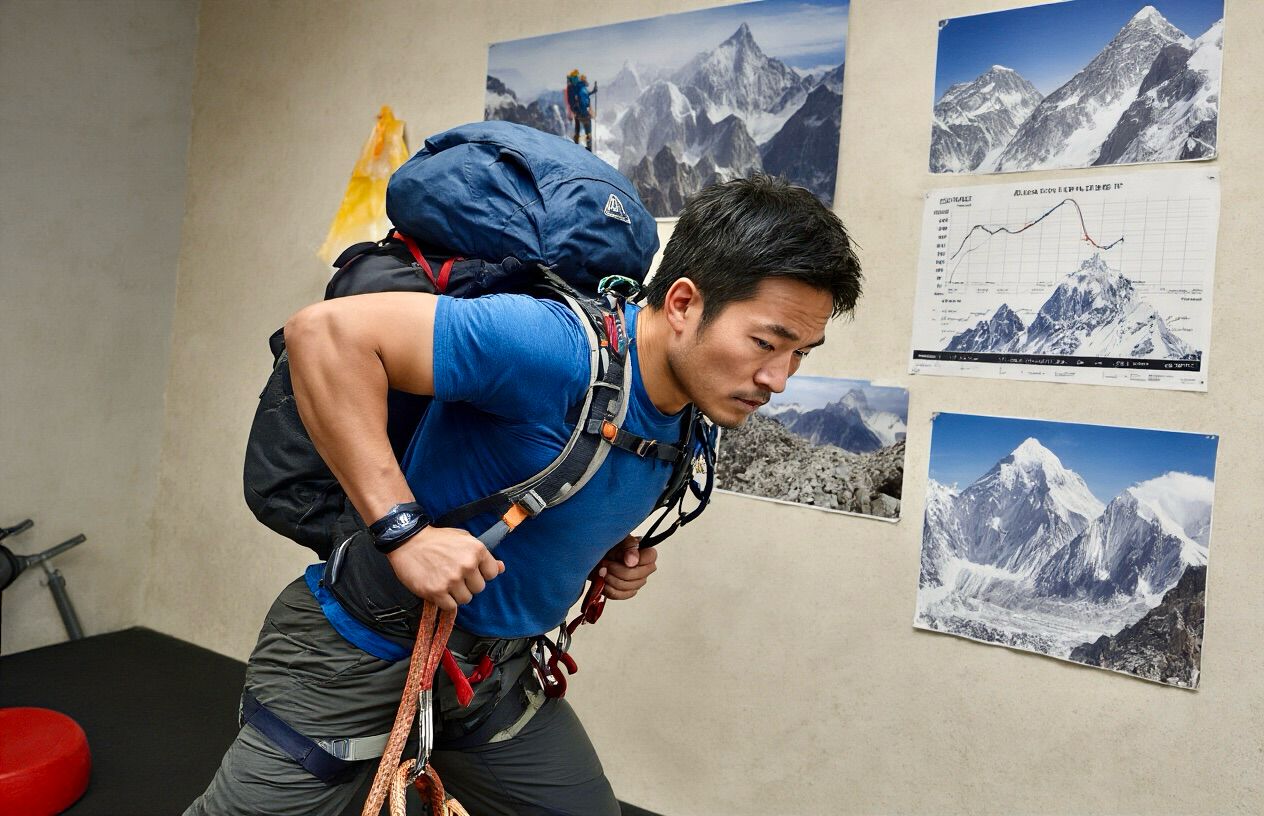
Cardiovascular Fitness Training Requirements
Preparing your cardiovascular system for high-altitude climbing is essential for Island Peak success. Begin your training regimen at least 3-4 months before your expedition with these focused activities:
- Aerobic Training: Incorporate 30-45 minute sessions of running, cycling, or swimming 4-5 times weekly
- Interval Training: Include high-intensity intervals (1-2 minute bursts) followed by recovery periods
- Stair Climbing: Practice with a loaded backpack to simulate climbing conditions
- Altitude Training: If available, utilize altitude training masks or chambers to prepare your body
Aim to gradually increase your endurance to sustain 4-6 hours of continuous activity, mimicking the demands of summit day on Island Peak.
Strength and Endurance Building Exercises
Building targeted strength in key muscle groups will support your climbing efficiency:
- Lower Body Focus: Perform squats, lunges, and step-ups to build quad and glute strength
- Core Stability: Develop a strong core with planks, Russian twists, and mountain climbers
- Upper Body Conditioning: Include pull-ups, push-ups, and shoulder presses for load-carrying ability
- Balance Work: Practice single-leg exercises to improve stability on uneven terrain
Incorporate 2-3 strength sessions weekly alongside your cardio training, with emphasis on muscular endurance rather than maximum strength.
Mental Preparation and Psychological Readiness
The psychological demands of high-altitude climbing are equally important:
- Visualization Techniques: Regularly visualize yourself successfully navigating challenging sections
- Meditation Practice: Develop mindfulness skills to manage stress during difficult climbing situations
- Discomfort Tolerance: Intentionally train in adverse conditions (cold, rain, wind) to build mental resilience
- Goal Setting: Establish clear, achievable milestones for your training and climb
Consider working with experienced climbers or a sports psychologist to develop specific mental strategies for overcoming common challenges on Island Peak.
Medical Checkups and Health Assessments
Before embarking on your expedition, a comprehensive medical evaluation is crucial:
- Comprehensive Physical: Schedule a thorough examination with a physician familiar with high-altitude adventures
- Cardiac Evaluation: Consider an EKG or stress test, especially if you're over 40 or have risk factors
- Pulmonary Function: Assess your respiratory capacity to identify potential challenges at altitude
- Blood Work: Complete blood count and other relevant tests to ensure optimal health
- Dental Checkup: Address any dental issues before departure to avoid complications in remote areas
Discuss your specific medical history and concerns with your healthcare provider, and ensure you have appropriate medications and vaccinations for your journey to Nepal and Island Peak.
Gradual Ascent Strategy Implementation
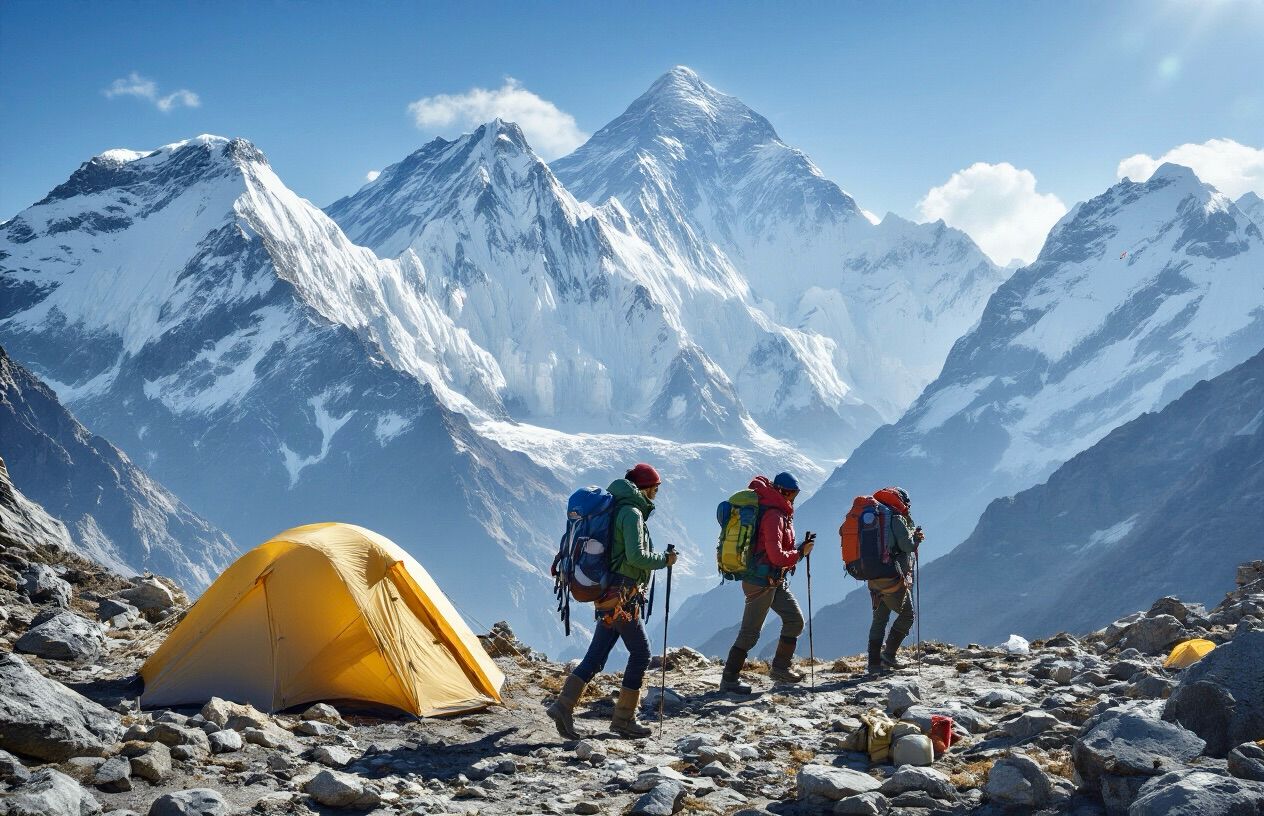
Proper implementation of a gradual ascent strategy is crucial for safe and successful acclimatization when climbing Island Peak. Following established protocols can significantly reduce your risk of altitude-related issues while increasing your chances of summit success.
Optimal Daily Elevation Gain Limits
When climbing at high altitudes, it's essential to maintain conservative elevation gains:
- Limit daily ascent to 300-500 meters (1,000-1,640 feet) once above 3,000 meters
- Follow the "climb high, sleep low" principle whenever possible
- After reaching 4,000 meters, consider limiting gains to 300 meters per day
- Monitor your body's response to each elevation increase and adjust accordingly
- Remember that individual acclimatization rates vary significantly
Rest Day Scheduling and Importance
Rest days are not optional luxuries but essential components of your climbing strategy:
- Schedule a full rest day for every 1,000 meters gained above 3,000 meters
- Use rest days for short acclimatization hikes followed by returning to the same elevation
- Maintain proper hydration and nutrition during rest days
- Allow your body to adjust physiologically to the thinner air
- Rest days provide valuable opportunities to assess your physical condition
Sleep Altitude Versus Climb Altitude Principles
The "climb high, sleep low" principle is fundamental to safe acclimatization:
- Climb to higher elevations during the day but return to lower elevations for sleeping
- Aim to sleep no more than 300-400 meters higher than the previous night
- Your sleeping elevation is more critical than your maximum daily climbing elevation
- This approach stimulates production of red blood cells while allowing proper recovery
- Consider using Island Peak Base Camp as your sleeping location while acclimating
Flexible Itinerary Planning for Weather Delays
Weather in the Himalayas is notoriously unpredictable and requires flexible planning:
- Build extra buffer days into your expedition schedule
- Be prepared to wait out adverse conditions rather than pushing forward unsafely
- Monitor weather forecasts daily through your expedition leader
- Understand that summit windows can open and close rapidly
- Have alternative plans for acclimatization if your primary route becomes inaccessible
- Weather delays often provide additional acclimatization benefits if used properly
Properly implemented, these gradual ascent strategies create the foundation for a safe and successful Island Peak expedition, allowing your body the time it needs to adapt to the challenging high-altitude environment.
Essential Acclimatization Techniques
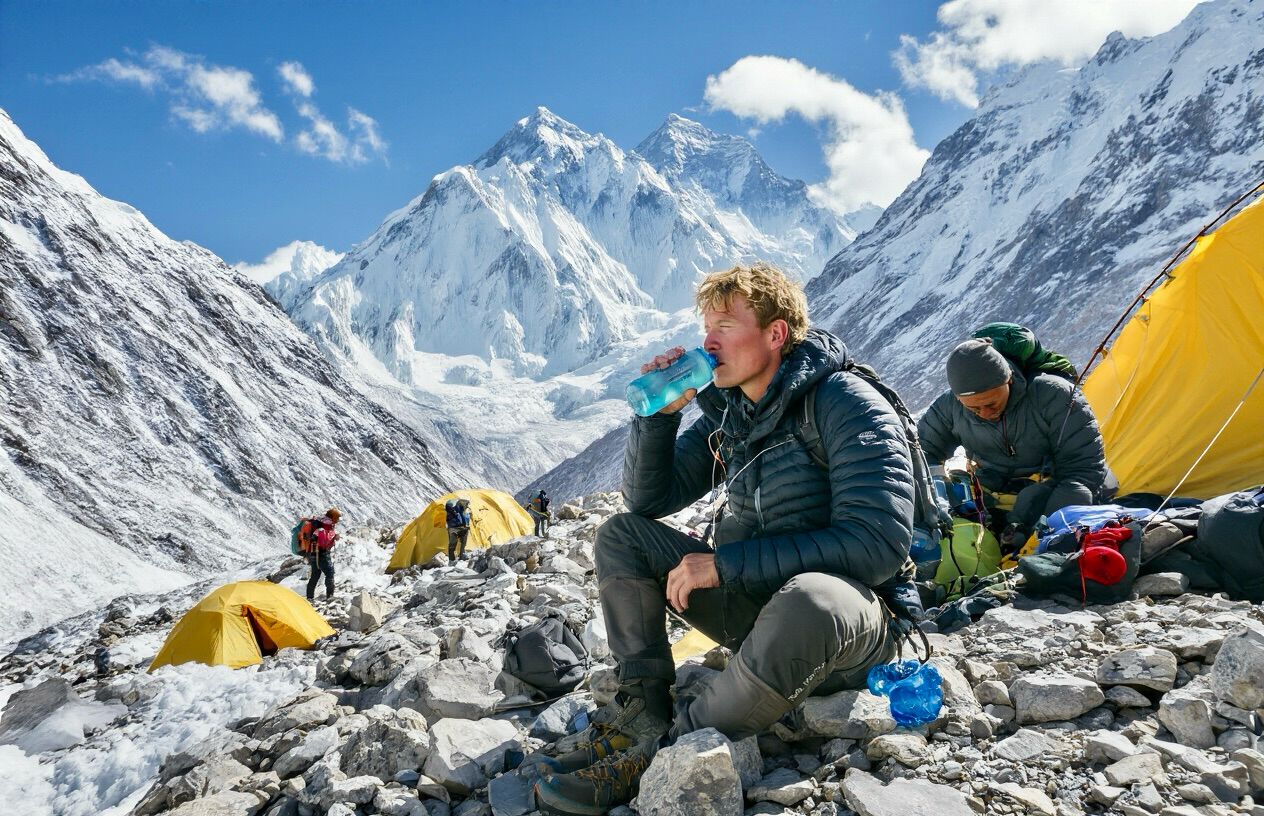
Acclimatization is crucial for a successful Island Peak climb. Proper techniques can make the difference between summit success and potentially dangerous altitude-related complications. Let's explore the most effective approaches to help your body adapt to high altitude conditions.
Proper Hydration and Electrolyte Balance
At high altitudes, your body dehydrates more quickly due to increased respiratory rate and lower humidity. Aim to drink 4-5 liters of water daily during your Island Peak expedition. This may seem excessive, but proper hydration directly impacts your body's ability to adapt to altitude.
Include electrolyte supplements in your daily routine. The combination of sodium, potassium, and magnesium helps maintain cellular function and prevents cramping. Electrolyte-enhanced drinks are particularly useful during longer trekking days when you're losing minerals through perspiration.
Breathing Exercises and Oxygen Efficiency
Focused breathing techniques significantly improve oxygen utilization at high altitudes. Practice the "pressure breathing" method—take a deep breath, then exhale forcefully through pursed lips as if blowing out a candle. This technique helps maintain pressure in your lungs, allowing better oxygen absorption.
Diaphragmatic breathing exercises performed for 10 minutes each morning and evening can increase lung capacity. While resting at camp, practice inhaling slowly through your nose for a count of four, holding for two counts, then exhaling through your mouth for six counts.
Active Rest Versus Complete Rest Strategies
The "climb high, sleep low" principle is fundamental to Island Peak acclimatization. During acclimatization days, engage in short hikes to higher elevations (300-500m above camp), then return to lower altitudes for sleeping. This active rest approach stimulates your body to produce more red blood cells without overexertion.
Complete rest days are equally important. Schedule them strategically after reaching significant altitude milestones (such as after reaching Namche Bazaar at 3,440m and Dingboche at 4,410m). During these days, light stretching and gentle movement around camp maintain circulation without taxing your system.
Nutrition Optimization for High Altitude
Your caloric needs increase by approximately 200-300 calories per day at high altitudes due to increased metabolic demands. Focus on a carbohydrate-rich diet (60-70% of intake) to fuel your climb efficiently. Complex carbohydrates like whole grains provide sustained energy crucial for long trekking days.
Protein intake (about 15-20% of daily calories) supports muscle recovery and prevents breakdown at altitude. Include easily digestible options like eggs, lentils, and fish when available in teahouses along the route. Small, frequent meals often work better than three large ones, as digestion can be compromised at higher elevations.
Iron-rich foods support increased red blood cell production—a natural adaptation to altitude. Supplement your diet with dried fruits, dark leafy greens, and fortified cereals when possible during your Island Peak journey.
Recognizing and Managing Altitude Sickness
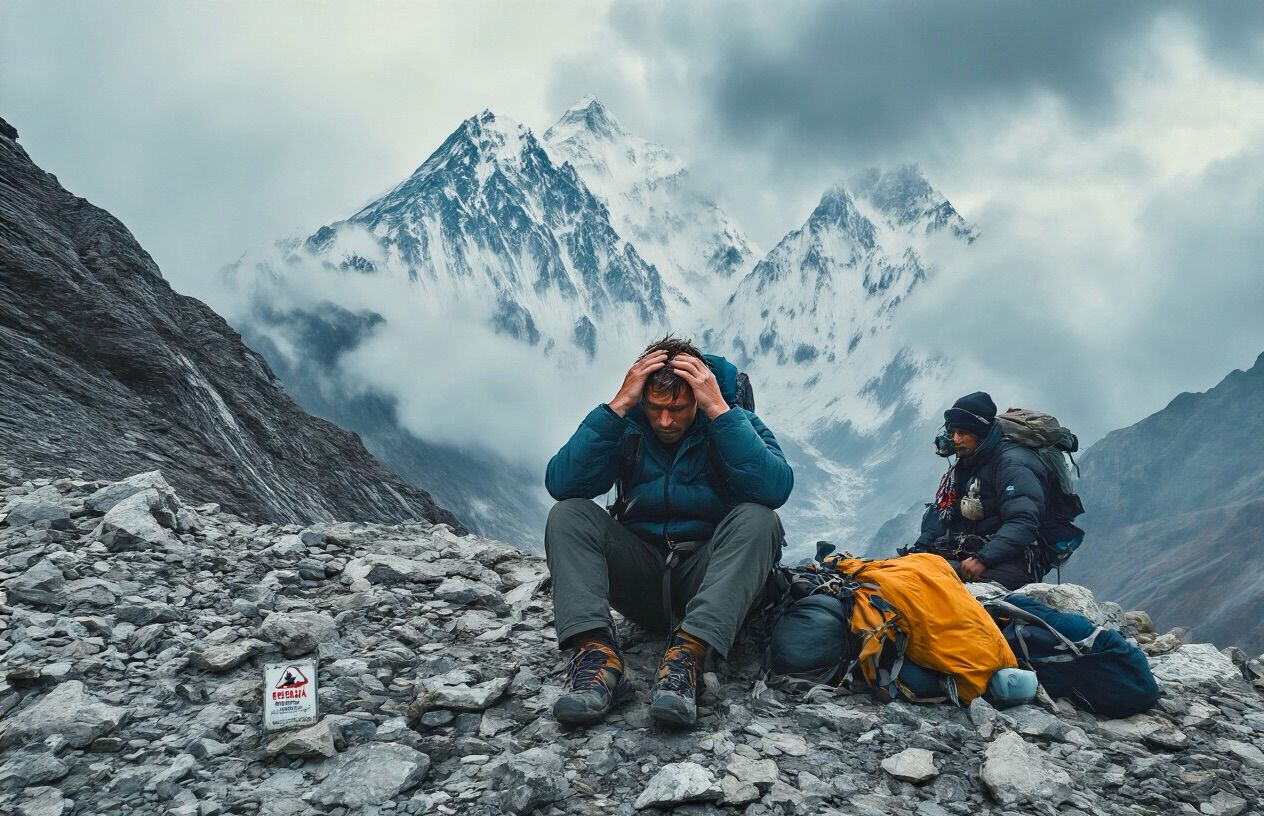
Altitude sickness is one of the primary concerns when climbing Island Peak, and understanding how to identify and manage it can make the difference between a successful summit and a dangerous situation. At elevations above 8,000 feet (2,400 meters), every climber needs to be vigilant about their body's response to the thinner air.
Early Warning Signs and Symptom Identification
The key to managing altitude sickness is early detection. Watch for these common symptoms:
- Mild symptoms: Headache, nausea, loss of appetite, fatigue, dizziness, trouble sleeping
- Moderate symptoms: Severe headache, increased nausea and vomiting, shortness of breath, decreased coordination
- Severe symptoms: Difficulty breathing at rest, inability to walk, confusion, fluid buildup in lungs or brain
It's crucial to monitor yourself and your climbing partners throughout the journey. Symptoms typically appear within 6-24 hours of reaching a new elevation and often worsen at night.
Immediate Response Protocols for Mild Symptoms
When mild symptoms appear, follow these immediate protocols:
- Stop ascending - Do not climb higher until symptoms resolve
- Rest and hydrate - Drink 3-4 liters of water daily
- Take medication - Acetazolamide (Diamox) can help with acclimatization
- Consider mild pain relievers - Ibuprofen can help with headaches
- Monitor oxygen saturation - Levels below 80% require careful observation
Remember that ignoring mild symptoms can lead to more serious conditions like High Altitude Pulmonary Edema (HAPE) or High Altitude Cerebral Edema (HACE).
Emergency Descent Procedures and Criteria
Emergency descent becomes necessary when:
- Symptoms worsen despite rest and medication
- Severe symptoms develop (confusion, ataxia, severe shortness of breath)
- Oxygen saturation drops dramatically
- HAPE or HACE is suspected
The emergency descent protocol includes:
- Immediate descent of at least 1,000-3,000 feet (300-1,000 meters)
- Supplemental oxygen administration if available
- Dexamethasone for suspected HACE
- Portable hyperbaric chamber use if descent is delayed
- Communication with base camp and emergency services
When to Abandon Summit Attempts for Safety
The decision to abandon a summit attempt is never easy but sometimes necessary. Consider turning back when:
- Moderate altitude sickness persists for more than 24 hours
- Any severe symptoms appear
- Weather conditions deteriorate rapidly
- You feel unusually exhausted or unwell
- Your guide or Sherpa recommends descent
Remember the mountaineering adage: "The mountain will always be there." Your safety is paramount, and there's no shame in turning back. Many experienced climbers have abandoned summit attempts to ensure they can climb another day.
Always listen to your body and respect the advice of experienced guides. The ultimate goal is to return safely, with or without reaching the summit.
Equipment and Gear for Safe Acclimatization
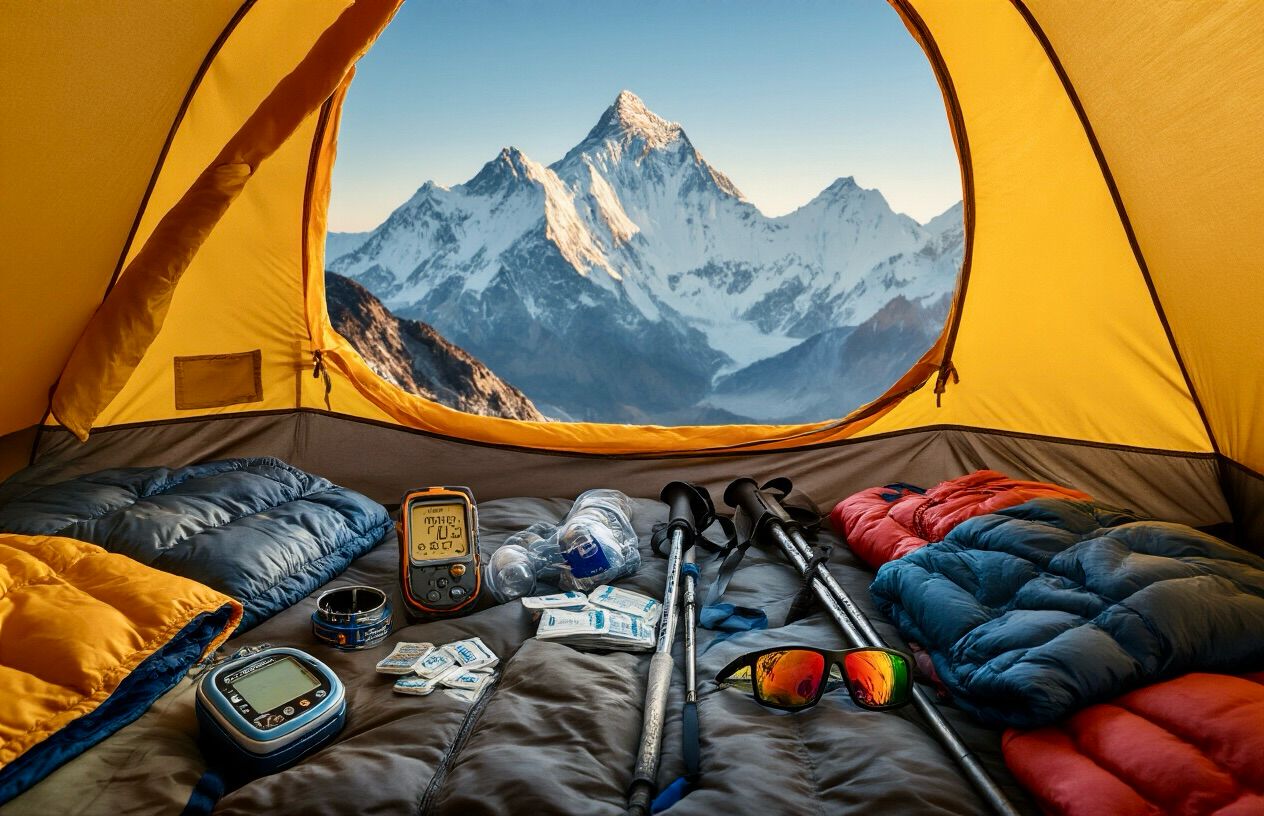
Proper equipment is essential for managing the challenges of high-altitude climbing on Island Peak. Having the right gear not only enhances comfort but can be critical for safety during your acclimatization process.
Clothing Layers for Temperature Regulation
The key to comfort at high altitudes is a versatile layering system:
- Base Layer: Moisture-wicking merino wool or synthetic materials that pull sweat away from your skin
- Mid Layer: Insulating fleece or down that traps body heat
- Outer Shell: Waterproof and windproof jacket and pants to protect against harsh mountain weather
- Extremity Protection: Quality gloves (thin liners plus heavy insulated ones), warm hat, and buff/neck gaiter
- Climbing-Specific: Down suit for summit day when temperatures can drop significantly
Temperature fluctuations on Island Peak can be extreme, often ranging from -20°C at night to +10°C in direct sunlight. Your ability to add or remove layers quickly will directly impact your body's energy expenditure and acclimatization efficiency.
Monitoring Devices for Health Tracking
These tools help you objectively assess your body's adaptation to altitude:
- Pulse Oximeter: Measures blood oxygen saturation levels (keep above 80% if possible)
- Heart Rate Monitor: Tracks resting heart rate (elevation of 20+ bpm from baseline can indicate poor acclimatization)
- Altimeter Watch: Monitors ascent rates to ensure you don't climb too quickly
- Sleep Tracker: Poor sleep quality is often an early sign of altitude issues
Monitoring these metrics daily creates a personal baseline, helping you detect concerning changes before they become serious problems.
Emergency Communication Equipment
When acclimatizing on remote sections of the Island Peak route:
- Satellite Phone: Essential for emergency evacuation requests
- Two-Way Radios: For communication between team members
- Personal Locator Beacon (PLB): One-button emergency signal device
- Smartphone with Offline Maps: Load with local topography and GPS tracking capabilities
- Power Banks: Multiple high-capacity options to keep devices charged in cold conditions
Everest Sherpa Expeditions provides satellite communication at all camps, but personal devices offer redundancy for safety.
Medication Kit Essentials for Altitude Issues
A properly stocked medical kit should include:
- Acetazolamide (Diamox): Helps prevent and treat AMS by accelerating acclimatization
- Dexamethasone: Emergency treatment for severe altitude sickness
- Nifedipine: Treats high altitude pulmonary edema (HAPE)
- Pain Relievers: For altitude-induced headaches (ibuprofen preferred)
- Sleeping Aids: Mild options that don't suppress respiratory drive
- Antibiotics: For respiratory or gastrointestinal infections common at altitude
- Rehydration Salts: Combat dehydration which worsens altitude symptoms
Consult with a travel physician before your expedition to ensure proper dosages and usage instructions for these medications.
Sherpa Guidance and Local Expertise
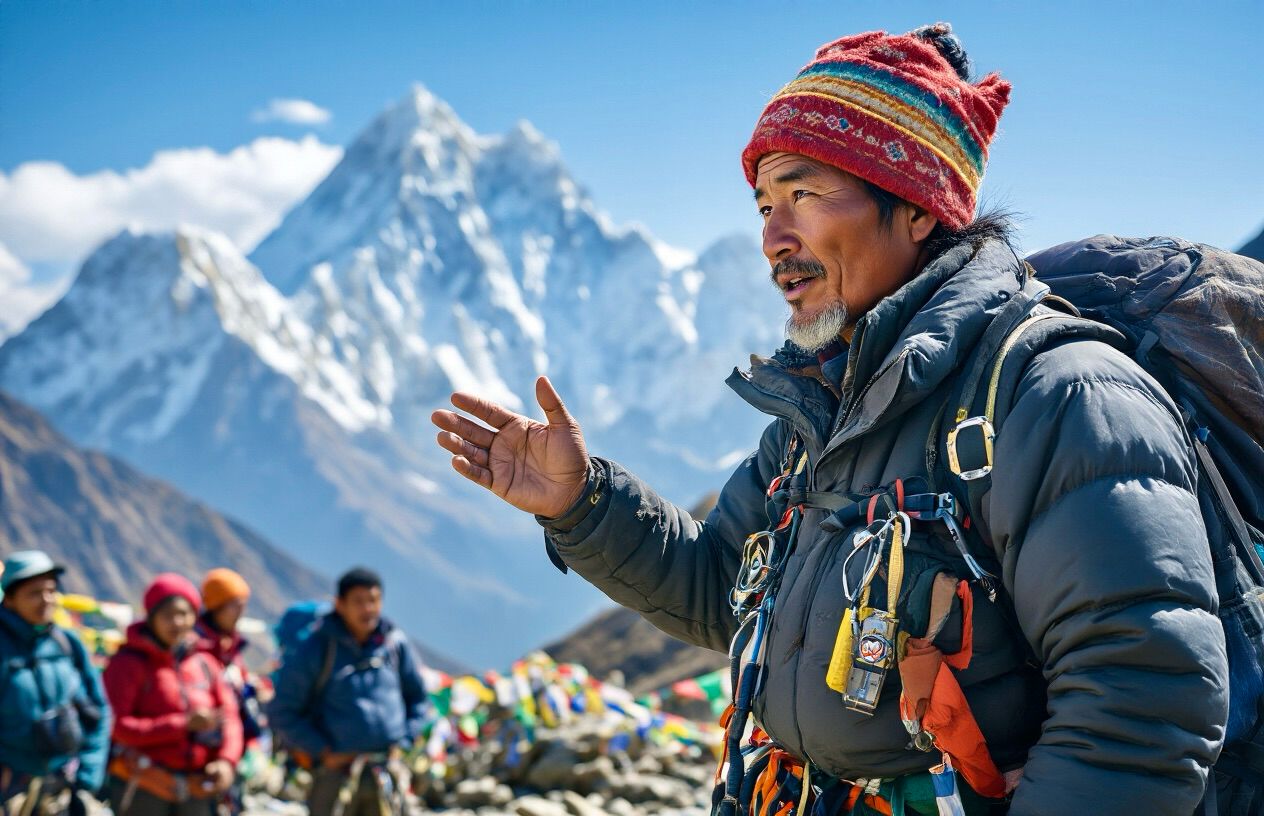
Benefits of Experienced Sherpa Support
When climbing Island Peak, the value of experienced Sherpa support cannot be overstated. Sherpas bring generations of high-altitude knowledge and a natural physiological adaptation to extreme elevations. Their presence provides climbers with enhanced safety through constant monitoring of both weather conditions and your physical state.
Experienced Sherpas from Everest Sherpa Expeditions have intimate knowledge of Island Peak's terrain, allowing them to identify potential hazards before they become problematic. They excel at making critical decisions about when to push forward and when to rest, based on subtle environmental cues that most visitors would miss. This expertise dramatically improves your chances of a successful summit while minimizing risks.
Traditional Acclimatization Wisdom and Practices
Sherpa guides incorporate centuries-old acclimatization techniques that have been refined through generations of high-altitude living. These practices include specific breathing exercises designed to increase oxygen efficiency, strategic rest day implementation, and proper hydration protocols tailored to high-altitude environments.
Traditional Sherpa wisdom emphasizes "climbing high, sleeping low" - a proven technique where climbers ascend to higher elevations during the day but return to lower camps for sleeping. This methodology has been scientifically validated as one of the most effective acclimatization strategies. Your Sherpa guides will also introduce you to local herbal remedies that can help alleviate mild altitude symptoms and improve overall comfort during acclimatization.
Route Selection and Timing Optimization
With intimate knowledge of Island Peak's various routes, Sherpas excel at selecting the optimal path based on current conditions, your experience level, and acclimatization status. They understand how weather patterns affect different sections of the mountain and can adjust itineraries accordingly to maximize safety and summit success.
Timing is crucial on Island Peak, and Sherpa guides excel at identifying the ideal summit windows. They carefully analyze weather forecasts alongside their knowledge of seasonal patterns to determine the safest and most favorable conditions. This expertise helps avoid unnecessary exposure to extreme temperatures, high winds, or precipitation that could compromise safety.
Cultural Considerations and Respect Protocols
Climbing in the Himalayas involves navigating not only physical terrain but cultural landscapes as well. Your Sherpa guides will help you understand important local customs, appropriate behavior at religious sites, and traditional mountain respect protocols that have been observed for centuries.
Before beginning the climb, Sherpas often perform traditional blessing ceremonies (puja) to ensure safe passage on the mountain. Participating in these ceremonies demonstrates respect for local beliefs while fostering a deeper connection with the mountain environment. Understanding and honoring these cultural practices enhances your overall expedition experience while showing appropriate respect for the sacred mountains of Nepal.
Weather Monitoring and Decision Making
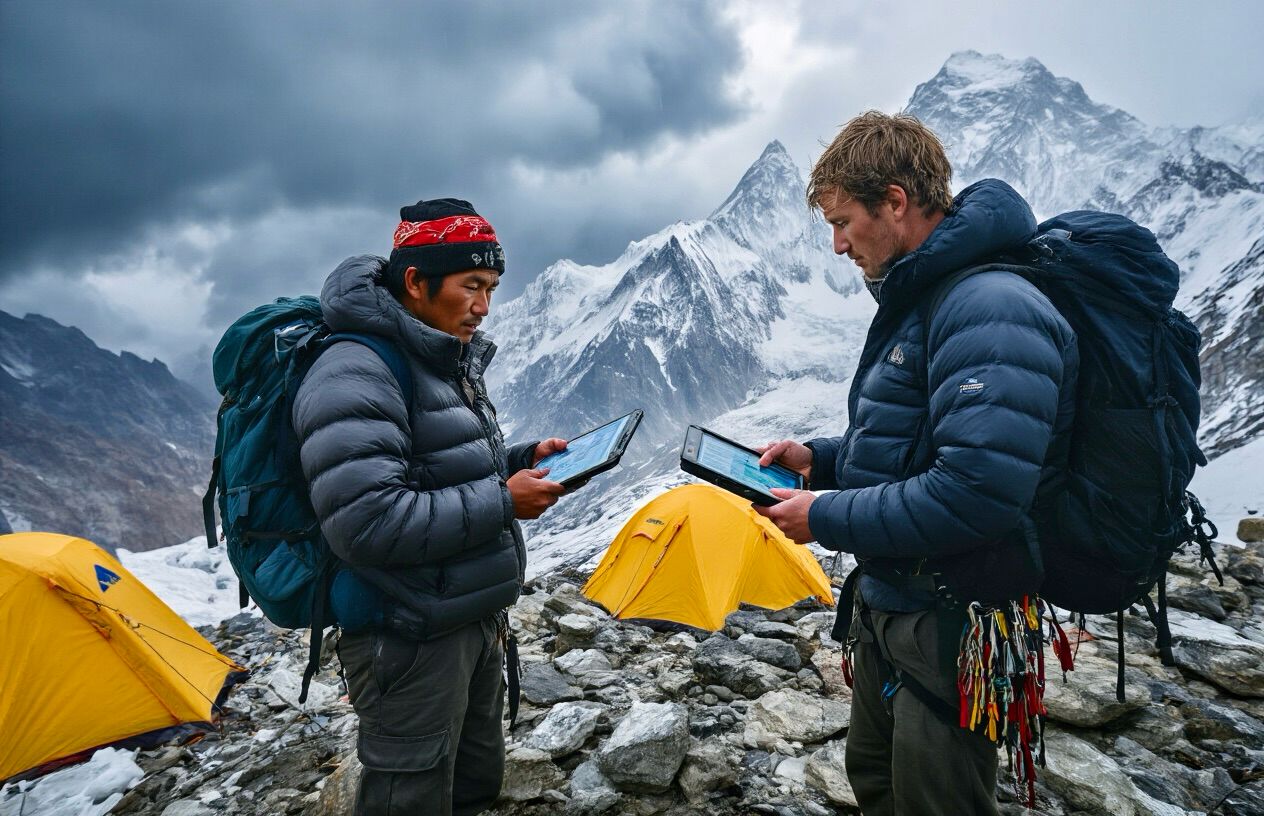
Understanding Himalayan Weather Patterns
The Himalayan region, home to Island Peak, presents some of the most unpredictable and extreme weather conditions on Earth. Successful climbers must develop a foundational understanding of these patterns before attempting the summit. The mountain experiences distinct seasons, with pre-monsoon (April-May) and post-monsoon (September-October) typically offering the most favorable climbing conditions. During these periods, winds are generally more moderate and precipitation less likely.
Weather in the Himalayas can change dramatically within hours, with clear mornings frequently giving way to afternoon storms. Temperature fluctuations between day and night can exceed 20°C, requiring climbers to be prepared for both heat and freezing conditions during a single climb.
Safe Window Identification for Summit Attempts
Identifying a safe summit window is perhaps the most critical decision you'll make during your Island Peak expedition. This requires:
- Monitoring barometric pressure trends (stable or rising pressure typically indicates good weather)
- Observing cloud formations and movement patterns
- Consulting with experienced guides who recognize subtle local weather indicators
- Understanding that 2-3 day weather forecasts are more reliable than longer predictions
The ideal summit window features clear visibility, winds under 25 km/h, no precipitation forecast, and stable temperatures. Experienced climbing teams will often wait several days at high camp for these optimal conditions rather than risking a summit push in marginal weather.
Emergency Shelter and Contingency Planning
Even with careful planning, the weather can deteriorate unexpectedly, making contingency planning essential. Your expedition should include:
- Designated emergency shelter points along the route
- Clear protocols for when to abort summit attempts
- Cached emergency supplies at strategic locations
- GPS waypoints for navigation in poor visibility
Every team member should be familiar with emergency bivouac techniques and carry essential survival gear regardless of the forecast. Constructing emergency snow shelters should be practiced before the expedition begins.
Communication with Base Camp and Weather Updates
Maintaining reliable communication between climbing teams and base camp is non-negotiable for safety. Modern expeditions utilize:
- Satellite phones for emergency communication
- Two-way radios for team coordination
- Weather update schedules (typically morning and evening)
- Designated communication protocols
Base camp typically receives weather forecasts via satellite internet and relays this information to climbing teams. Updates should include not just current conditions but predictive data about jet stream movement, approaching frontal systems, and changing pressure gradients. Higher camps should maintain regular check-in schedules, with missed communications triggering predetermined response protocols.
Remember that local knowledge often surpasses technology—experienced Sherpas can frequently predict weather changes hours before they appear on forecasts by observing subtle environmental cues.
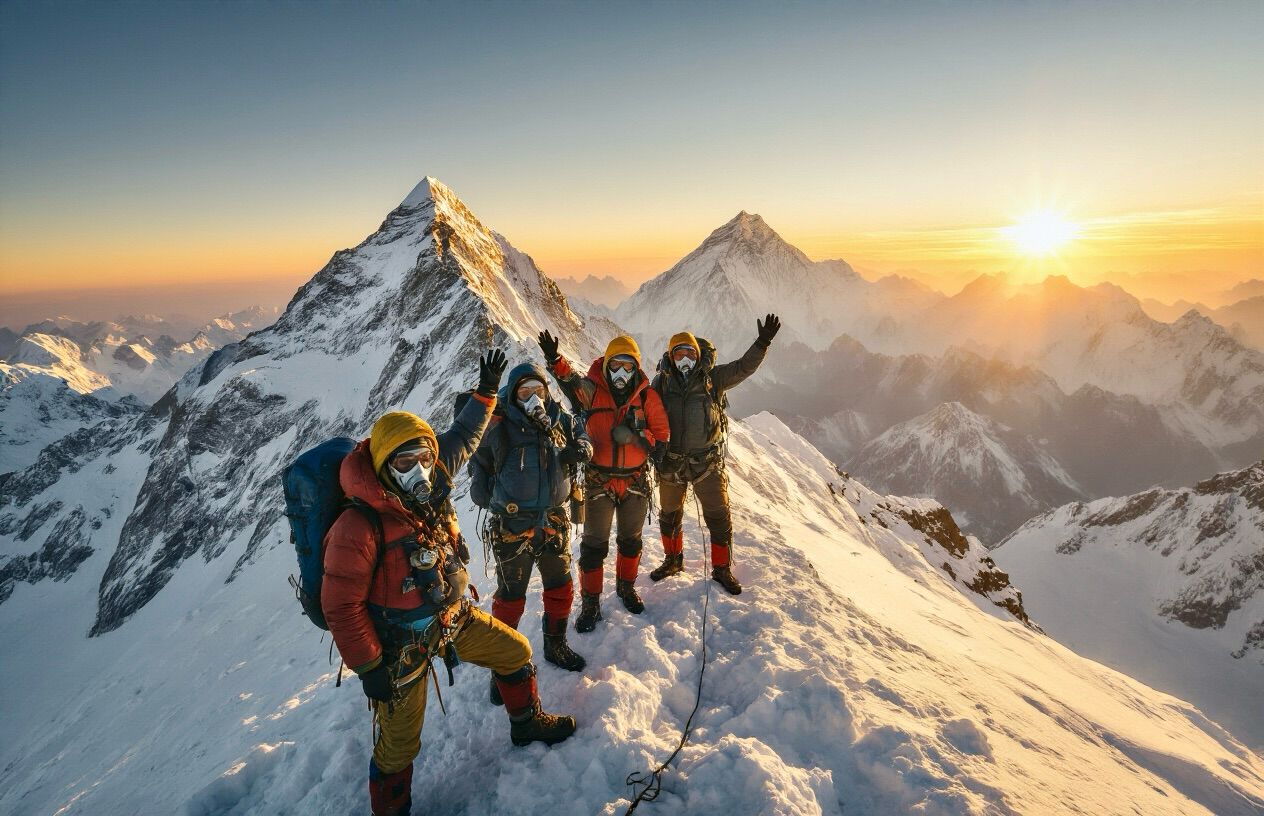
Acclimatization remains the crucial difference between a successful Island Peak climb and a potentially dangerous expedition. By understanding high altitude physiology, implementing a gradual ascent strategy, and mastering essential acclimatization techniques, you set yourself up for a rewarding summit experience. Recognizing early signs of altitude sickness and having the proper equipment further enhances your safety during this challenging adventure.
Everest Sherpa Expeditions prioritizes your well-being through experienced Sherpa guidance, careful weather monitoring, and personalized acclimatization plans. Remember that patience is your greatest ally on Island Peak – giving your body adequate time to adapt is not just recommended, it's essential. With proper preparation and respect for the acclimatization process, you'll maximize your chances of standing proudly on the summit while creating memories that will last a lifetime. We look forward to supporting your Island Peak journey and helping you achieve your mountaineering goals safely.
If you need any further information, please contact us by email: [email protected], Phone: +977- 980 195 6248 (WhatsApp).

